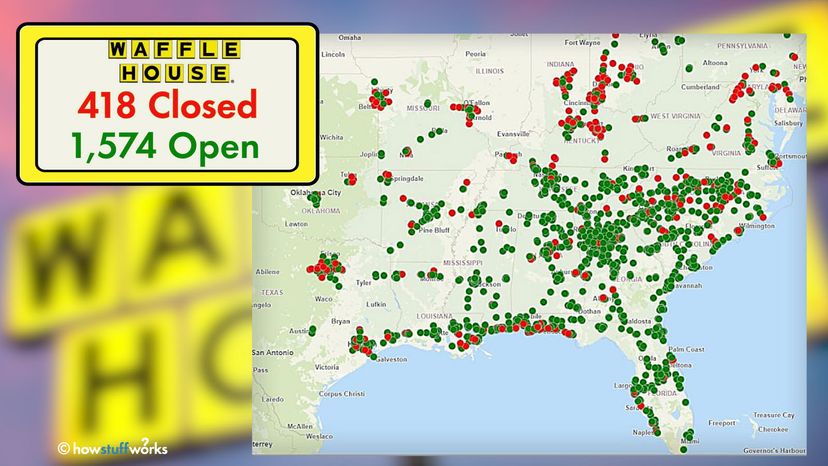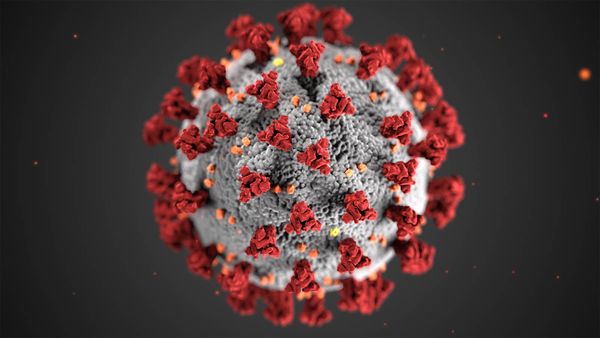
Drive down any road or highway in the American Southeast and you'll likely see at least one — probably more than one — of the yellow-and-black Waffle House signs ablaze, 24/7, 365 days a year. That includes during natural disasters, major power outages and other emergencies.
That's because the Georgia-based chain — known for its famous "scattered, smothered and covered" hash browns — literally keeps the lights on. Waffle House has such a strong reputation for being able to stay open during and after any type of disaster, the Federal Emergency Management Agency (FEMA) uses the restaurants to measure the severity of storm damage on the ground by what's known as the Waffle House Index. Today FEMA is using the index to gauge the severity of the coronavirus pandemic — and is has the Waffle House Index pegged at red.
Advertisement
The term "Waffle House Index," was created by former FEMA director W. Craig Fugate, who managed a record 81 disaster declarations in 2010, then another record 87 in 2011 while managing FEMA for the Obama administration. Fugate designed the index on how quickly Waffle Houses are able to get back up and running following a storm or disaster.
"It's a shorthand for us to get in there and quickly get a snapshot," Fugate told The New York Times in 2012. "Is the Waffle House open? Everything normal there?"
The color-coded index is simple: If the local Waffle House is serving a full menu, it's green. If the restaurant has no power, but is still open and serving a limited, grill-only menu, it's yellow. Red means the restaurant is closed, a "really bad" sign, according to Fugate. This is the first time the index has been used for a non-weather-related emergency.
Njeri Boss, Waffle House director of public relations, sent out a statement regarding the closures:
So why Waffle House and not another business or restaurant? Simple. Waffle House's operational philosophy is to get open no matter what. The restaurants will open without power; even without water. They'll bring in generators to turn the lights on and can make coffee with bottled water.
Today though, the coronavirus is taking a huge toll and more than 400 of the chain's 2,000 restaurants are closed. That's ominous news.
"If you get there and the Waffle House is closed?" Fugate told The Wall Street Journal after Hurricane Irene smacked the U.S. East Coast and Canada. "That's really bad. That's where you go to work."
This story has been updated to include the statement from Waffle House.
Advertisement


